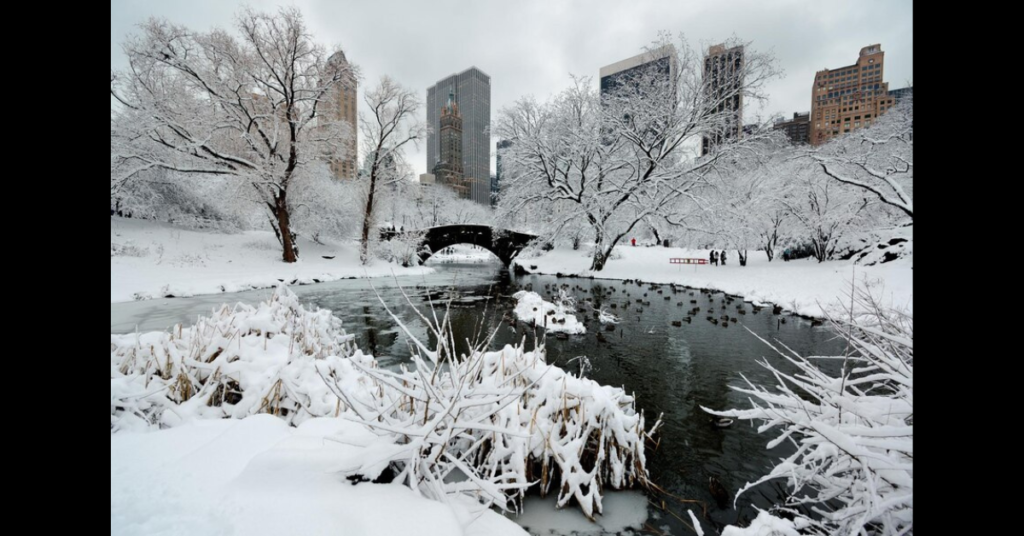Introduction
On a seemingly ordinary Monday morning, residents of Houston, Texas, woke up to an extraordinary sight: snow falling gently from the sky. This rare weather phenomenon, captured on video by many astonished locals, quickly became a topic of widespread discussion. Houston, known for its warm climate, typically experiences mild winters with very little snowfall. Thus, this event was not only unusual but also sparked curiosity and interest among meteorologists, climatologists, and the general public.
This essay delves into the various aspects of this remarkable event, examining the meteorological conditions that led to snowfall in Houston, the immediate and long-term impacts on the city, the public reaction, and the broader implications of such an unusual weather occurrence.
Houston’s Climate and Historical Context
Typical Climate of Houston
Houston, located in southeastern Texas near the Gulf of Mexico, is characterized by a humid subtropical climate. Summers are typically hot and humid, with temperatures often exceeding 90°F (32°C), while winters are mild to cool, with average high temperatures ranging from 60°F to 70°F (16°C to 21°C). Snowfall is a rare occurrence in Houston, with the city receiving, on average, less than an inch of snow annually. In many years, it receives no snow at all.
Historical Snowfall Events
While snowfall in Houston is rare, it is not entirely unprecedented. Historical records show that significant snowfall events have occurred, albeit infrequently. Some notable instances include:
- December 1895: Houston experienced a major snowstorm that left 20 inches of snow, the highest snowfall on record for the city.
- February 1960: A snowstorm brought approximately 4.4 inches of snow.
- December 1989: Houston received about 1.7 inches of snow.
- December 2004: A Christmas Eve snowstorm brought 1 inch of snow, marking the first white Christmas in Houston’s recorded history.
- February 2011: Another notable snowfall event brought several inches of snow to the region.
These events, while significant, are few and far between, underscoring the rarity of snow in this Gulf Coast city.
The Meteorological Conditions Leading to the Snowfall
Atmospheric Setup
The snowfall recorded on that early Monday morning in Houston was the result of a unique combination of meteorological factors. Understanding these conditions requires an examination of the atmospheric setup leading to the event.
- Cold Air Mass: A strong cold front had moved southward across the United States, bringing with it a cold air mass from the Arctic. This cold front caused temperatures in Houston to drop significantly, creating an environment conducive to snowfall.
- Moisture Supply: Simultaneously, moisture from the Gulf of Mexico was drawn into the region. The presence of sufficient moisture in the atmosphere is crucial for the formation of precipitation, including snow.
- Upper-Level Disturbance: An upper-level disturbance, often associated with a trough in the jet stream, provided the necessary lift to the moist air, allowing it to rise, cool, and condense into snowflakes.
Temperature Profile
For snow to fall and accumulate, the temperature profile of the atmosphere from the surface to higher altitudes must support snow formation. In this case, temperatures at the surface and in the lower atmosphere were at or below freezing. The cold front had effectively cooled the entire atmospheric column, ensuring that snowflakes did not melt into rain before reaching the ground.
Real-Time Weather Data
Real-time weather data from the day of the snowfall showed that temperatures in Houston had dropped to the mid-30s Fahrenheit (around 1-2°C). Dew points were also low, indicating the presence of dry, cold air. Radar imagery showed bands of precipitation moving across the region, confirming the presence of the upper-level disturbance.
Immediate Impact on Houston
Transportation and Infrastructure
The snowfall had an immediate impact on transportation and infrastructure in Houston. The city, unaccustomed to dealing with snow and ice, faced several challenges:
- Road Conditions: Snow accumulation on roads led to hazardous driving conditions. Many roads, bridges, and overpasses became slick and icy, resulting in numerous accidents and traffic delays. Authorities advised residents to stay off the roads unless absolutely necessary.
- Public Transportation: The city’s public transportation system experienced delays and disruptions. Buses and light rail services were affected, with some routes being temporarily suspended.
- Airport Operations: Flights at George Bush Intercontinental Airport and William P. Hobby Airport were delayed or canceled due to the weather conditions. Runways needed to be cleared of snow, and de-icing procedures were required for aircraft.
Power Outages
The sudden drop in temperature and the presence of snow and ice led to increased demand for electricity as residents turned up their heating systems. This surge in demand, coupled with weather-related damage to power lines, resulted in scattered power outages across the city.
Schools and Businesses
- School Closures: Many schools in Houston and the surrounding areas were closed for the day or operated on a delayed schedule. Safety concerns regarding transportation and the potential for power outages influenced these decisions.
- Business Operations: Businesses, particularly those reliant on in-person customer interactions, experienced disruptions. Some businesses chose to close for the day, while others operated with reduced staff.
Public Reaction and Social Media
Surprise and Delight
The snowfall in Houston elicited a range of reactions from the public, with many expressing surprise and delight. For many residents, especially children, it was their first time experiencing snow. Social media platforms were flooded with photos and videos of snow-covered landscapes, snowmen, and snowball fights.
Viral Videos
The video footage of snow falling in Houston quickly went viral. News outlets and social media users shared videos showing snowflakes gently drifting down onto familiar Houston landmarks. The videos served as a visual testament to the unusual weather event and were widely circulated both locally and nationally.
Community Engagement
The snow event also fostered a sense of community. Neighbors helped each other clear driveways and sidewalks, and families gathered to enjoy the rare weather phenomenon together. Local organizations and businesses took to social media to share winter safety tips and updates on service availability.
Broader Implications and Climate Considerations
Climate Change and Extreme Weather
While individual weather events cannot be directly attributed to climate change, the increasing frequency and intensity of extreme weather events globally have sparked discussions about the broader implications of a changing climate. Scientists note that a warming climate can lead to more erratic weather patterns, including unusual cold snaps and snowfall in typically warm regions.
Urban Planning and Preparedness
The snowfall highlighted the need for cities like Houston to be prepared for a wider range of weather scenarios. Urban planners and local governments may need to consider strategies for improving infrastructure resilience to rare but impactful events, such as snowstorms. This includes investing in better road maintenance equipment, enhancing power grid reliability, and updating emergency response plans.
Public Awareness and Education
Events like the Houston snowfall also underscore the importance of public awareness and education regarding weather preparedness. Residents in regions unaccustomed to snow may not be familiar with best practices for staying safe during such events. Public awareness campaigns can help educate citizens on how to prepare for and respond to unexpected weather conditions.
Long-Term Impacts and Lessons Learned
Economic Impact
The economic impact of the snowfall, while not as severe as that of prolonged extreme weather events, was nonetheless significant. Businesses faced lost revenue due to closures and reduced operations, and the costs associated with road maintenance, power restoration, and emergency services added up. Analyzing these impacts can help city planners and policymakers develop strategies to mitigate the economic effects of future weather events.
Infrastructure Improvements
In the aftermath of the snowfall, there may be calls for infrastructure improvements to better handle similar events in the future. This could include investments in snow removal equipment, enhancements to the power grid to prevent outages, and improvements in road materials and construction techniques to reduce the risk of ice formation.
Policy Changes
The unusual weather event may also prompt policy changes at the local and state levels. For example, building codes and regulations may be updated to ensure that structures can withstand a broader range of weather conditions. Emergency response protocols might be revised to enhance coordination and communication during rare weather events.
Community Resilience
Building community resilience is another key takeaway from the snowfall event. Encouraging neighborhoods to develop local support networks and emergency plans can enhance overall preparedness. Community resilience initiatives can include training programs, resource-sharing agreements, and the establishment of local emergency response teams.
Scientific and Meteorological Insights
Studying the Event
Meteorologists and climatologists will likely study the snowfall event in Houston to better understand the specific conditions that led to it. Analyzing the data from this event can provide insights into the interactions between cold air masses, moisture, and upper-level disturbances. This knowledge can improve weather forecasting models and enhance the ability to predict similar events in the future.
Climate Research
The Houston snowfall also contributes to the broader field of climate research. Studying rare weather events in the context of long-term climate trends can help scientists identify patterns and anomalies. This research can inform climate models and contribute to a deeper understanding of how climate change may influence weather variability.
Public Engagement in Science
The event provides an opportunity for public engagement in science and meteorology. By sharing accessible and engaging explanations of the weather phenomenon, scientists and educators can foster public interest in meteorology and climate science. This engagement can promote scientific literacy and encourage more people to participate in discussions about climate and weather.
Conclusion The unexpected snowfall in Houston on that early Monday morning was a memorable and impactful event. It highlighted the city’s vulnerability to rare weather phenomena, underscored the importance of preparedness and resilience, and provided valuable data for scientific research. As the climate continues to change, cities like Houston must be ready to adapt to a wider range of weather conditions, ensuring the safety and well-being of







